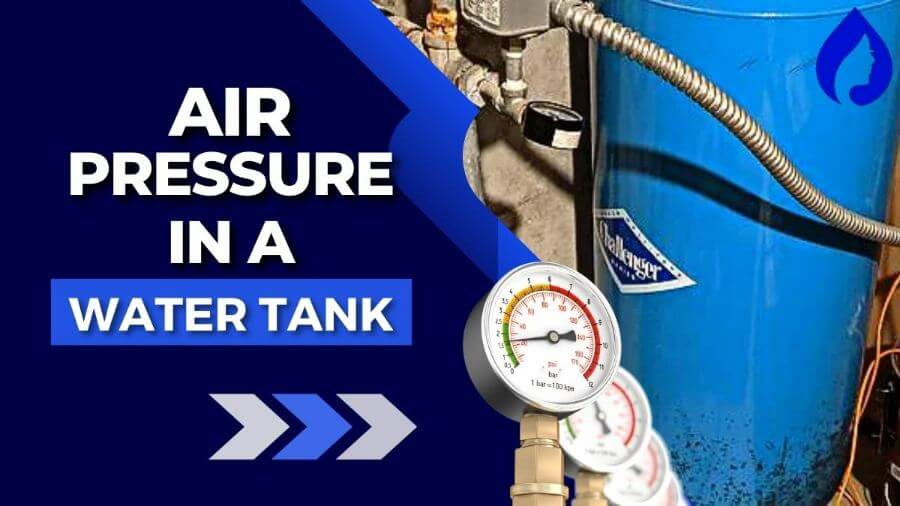
To keep your well water flowing smoothly, adjust your tank’s air pressure to 2 psi less than the pressure switch’s activation level. The precise setting will depend on the specific pressure settings of your tank.
Your well tank’s air pressure is the key to unlocking the water flow rate.
If the air pressure is too low, the water delivery may be weak or non-existent. On the other hand, if the air pressure is too high, it can cause excessive wear and tear on the tank and its components, potentially leading to leaks or other problems.
Keep reading this detailed guide on how much air pressure level should be in a water tank.
🌬️What Is Good Water Pressure for a Well?
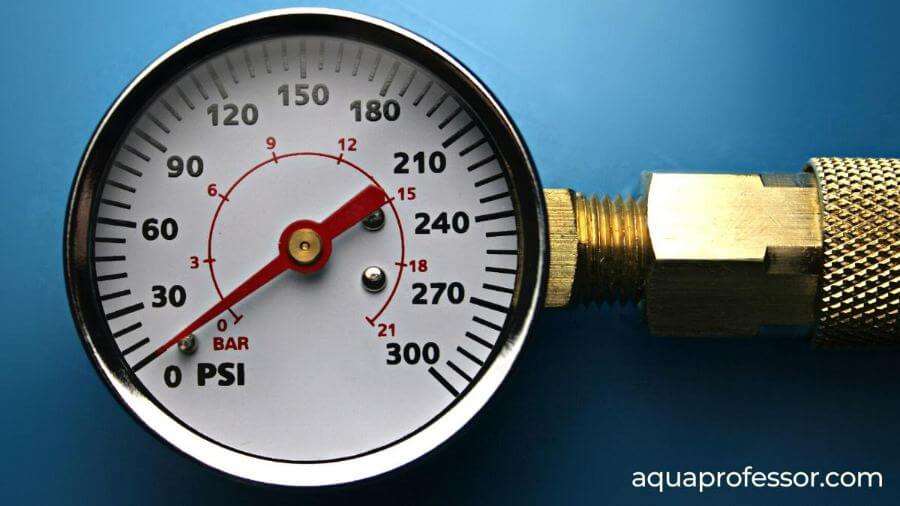
You will need a pressure gauge to check the operating pressure in your water tank.
You can purchase a standalone gauge or one integrated into an air pressure valve on the tank. To use the gauge, attach it to the valve and take a reading of the water tank pressure.
Here’s a step-by-step guide on how to check correct air pressure in your water tank:
Locate the air valve:
The air valve is usually located on the top of the tank and is a small valve that can be opened and closed with a screwdriver.Attach the pressure gauge:
To attach the pressure gauge, screw it onto the valve stem of the air valve. Make sure it is securely attached to get an accurate reading.Open the air valve:
Turn the valve counterclockwise to open it. It will allow air to flow into the gauge, enabling you to measure the pressure.Read the pressure:
The pressure gauge will have a dial with a needle that indicates the pressure reading. Read the pressure gauge reading and compare it to the recommended range. If the pressure is too low, it will need to be increased. If the pressure is too high, it will need to be decreased.Add or release air as needed:
If the pressure is too low, you can add air to the tank using an air compressor. Attach the air compressor to the air valve and turn it on. If there is too much pressure, you can release air from the pressure tanks by opening the air valve.Close the air valve:
When you finish checking the pressure, close the valve by turning it clockwise. Then, remove the pressure gauge and store it for future use.
It’s essential to regularly check the air pressure in your water tank to ensure that it is functioning correctly and to prevent damage to the tank or system.
Also Read: How To Increase Pressure In RO
⚙️How Do I Adjust The Pressure Settings Of My Well Tank?
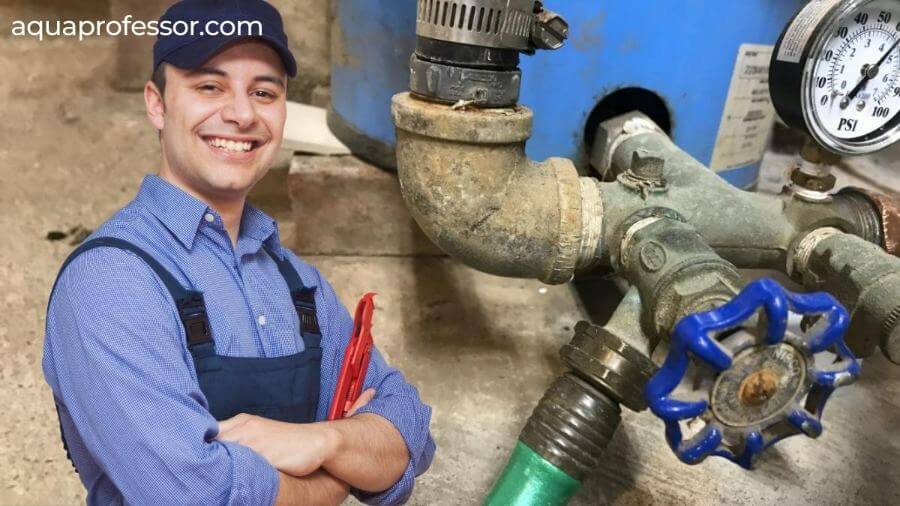
To adjust the pressure settings of your well tank, follow these steps:
Expert Advice:
It’s important to remember that your well tank’s pressure should never exceed the manufacturer’s recommended maximum pressure, or you risk damaging the system. If you face difficulty adjusting the pressure settings, consider hiring a professional plumber or a well-pump specialist.
Also Read: 9 Reasons Why Well Water Fluctuates
💧Water Pressure Tank Troubleshooting
1️⃣ Waterlogged Pressure Tank
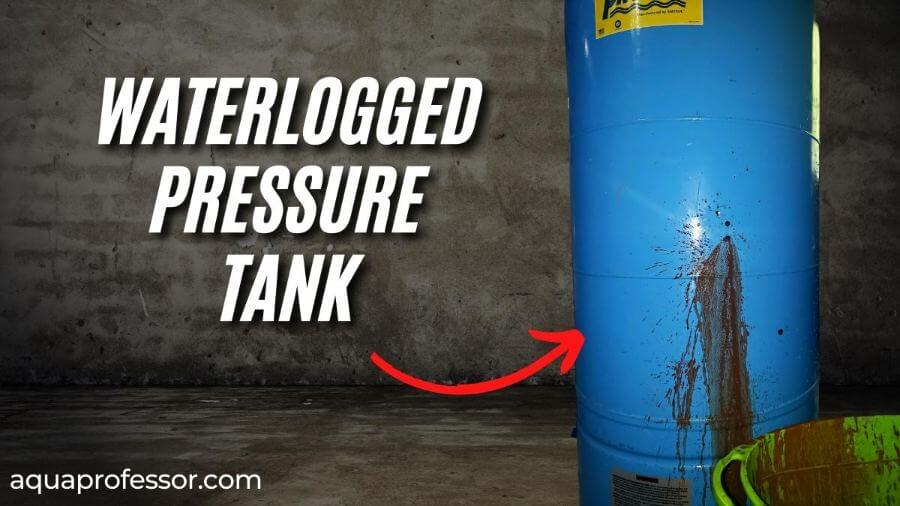
Reason:
A waterlogged pressure tank occurs when too much air has been discharged. It can happen for several reasons, including overfilling the tank, overuse of water, or a leak in the tank bladder.
Troubleshooting:
To fix a waterlogged pressure tank, you will need to recharge it by adding air to the tank. Here’s how:
Also Read: 7 Reasons Why Your Water Is Brown
2️⃣ Pressure Tank Has Pressure But No Water
Reason:
It can occur due to a clogged water inlet, a faulty check valve, or a malfunctioning pump.
Troubleshooting:
To fix this problem, try the following steps:
Also Read: Why Am I Getting Air In My Water Lines With A Well?
3️⃣ Tank Bladder Failure
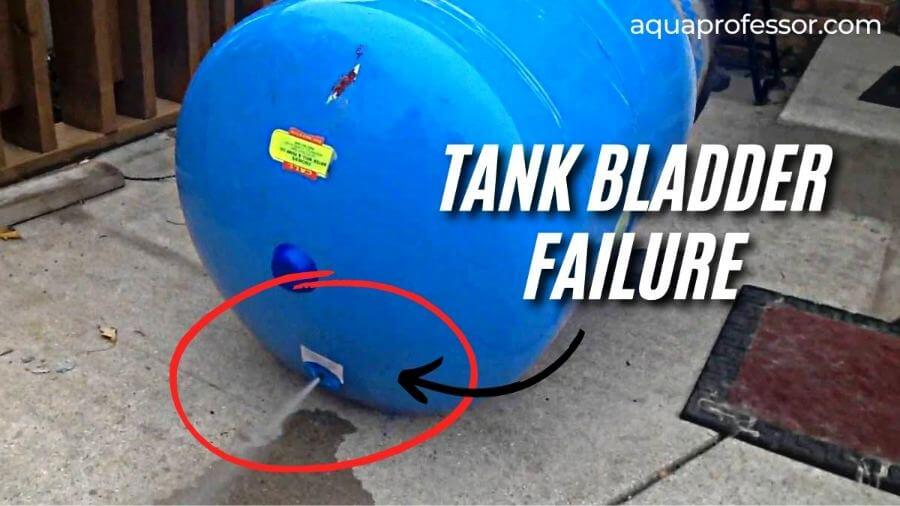
Reason:
The bladder in a pressure tank can fail for several reasons, including age, overuse, or exposure to harsh chemicals. When the bladder fails, it can leak water into the air chamber, reducing the overall pressure in the tank.
Troubleshooting:
To fix a failed bladder, you must replace the entire pressure tank. Here’s how:
Also Read: Can Your Well Run Out Of Water?
💡How Much Air Pressure Should Be In A Water Tank FAQs
What is good water pressure for a well?
Typically, good water pressure for a well is around 20-50 PSI.
However, the best water pressure for a well system depends on many things, like how big your storage tank is, how big your pump is, and how many fixtures you have in your home.
How does a well pressure tank work?
A well-pressure tank works by storing water under pressure and regulating the water pressure in a private well-water system. It uses an air bladder to separate water and air inside the tank and maintain certain air pressure. When water is drawn from the well, the pressure drops, and the pump turns on to refill the tank. The stored water in the tank is then used to supply water to the fixtures in the house, reducing the frequency of pump activation.
When should I add air to my water pressure tank?
You should add air to your water pressure tank when the pressure in the tank drops below the recommended level, typically around 20-30 psi for most residential systems. Adding air to the tank when necessary can help prolong the life of your pump and ensure consistent water pressure in your system.
How to increase water pressure with a pressure tank?
There are several ways to increase water pressure with a pressure tank, such as:
1. Increasing the air pressure in the tank,
2. Changing the pressure switch, or
3. Installing a larger pressure tank.
Using an air compressor or a bike pump with a Schrader valve adapter, you can add air to the tank until it reaches the recommended pressure, usually between 20 and 30 psi. You can also change the cut-on pressure setting on the pressure switch that controls the pump.
What happens if your pressure tank is too high?
If the pressure in the tank gets too high, it can cause the following:
1. Overworked pump
2. Pipes to burst
3. Leaks, and
4. The less efficient system overall
Adarsh is a Health & Nutrition Sciences graduate with expertise in environmental health. He is associated with ventures like Glacier Fresh Filter and Simpure Filter Systems. Through Aqua Professor, he intends to provide helpful information to every home to help them make smarter decisions.
